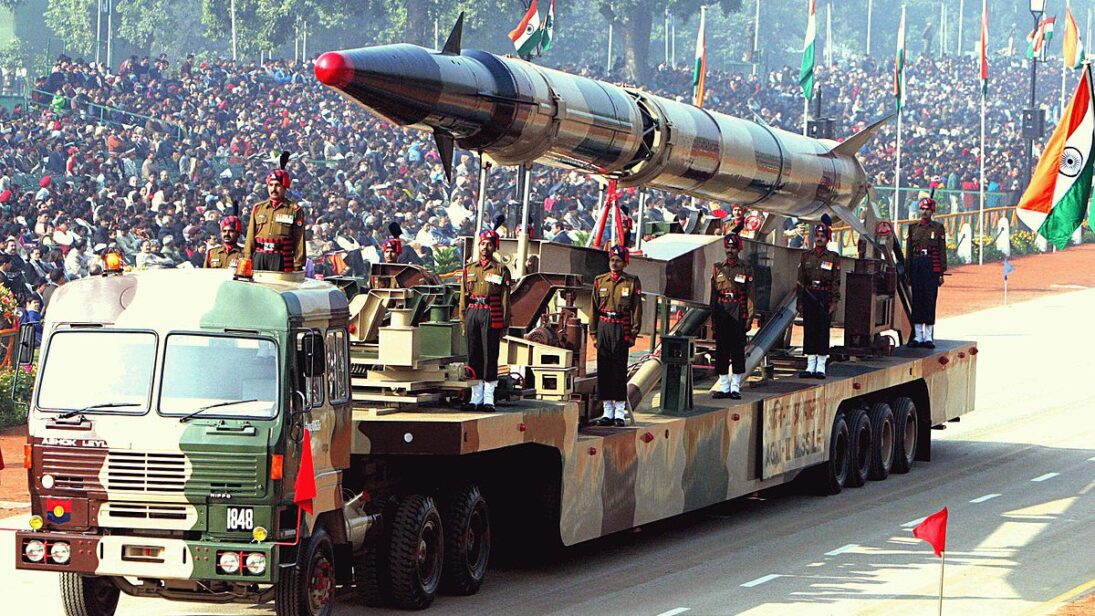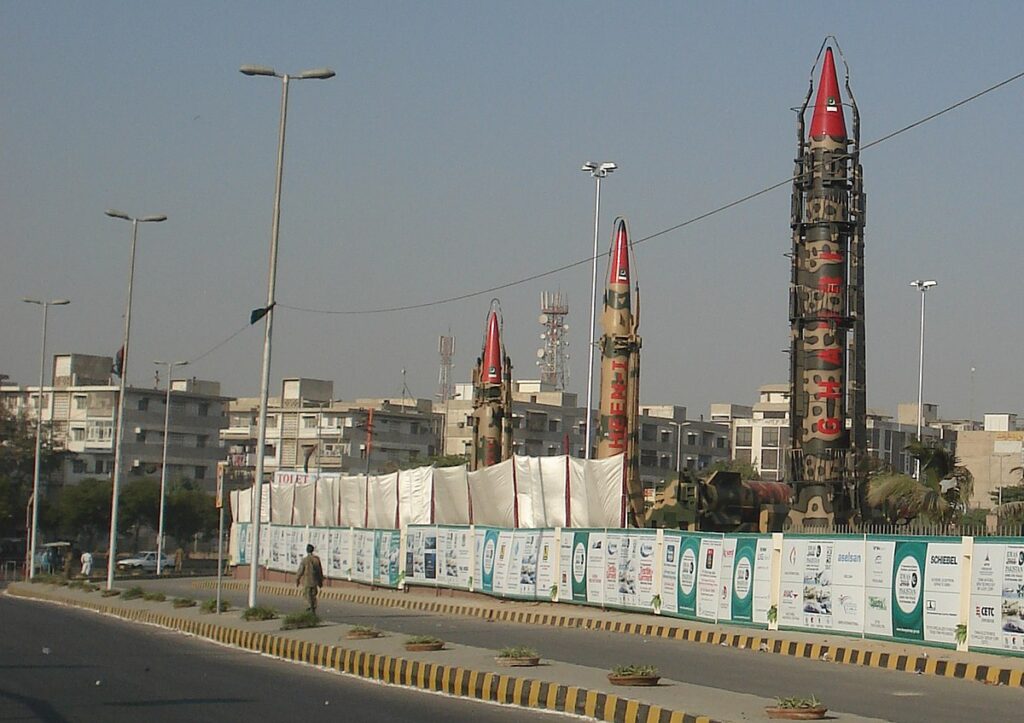
In recent years, Washington has described China as its “greatest strategic competitor” and adopted a more aggressive policy to counter Beijing’s growing influence. While U.S. domestic audiences have largely applauded Washington’s more assertive stance, escalating tensions between the United States and China threaten to spiral into a security dilemma in South Asia. In the midst of this competition, Washington and Beijing must take care not to aggravate existing rivalries in the region. The first step is preventing an escalating arms race.
The India-Pakistan nuclear rivalry is one of the most dangerous in the world. Arms races, security dilemmas, stability and instability, and persistent competition take center stage in their bilateral relations. While the origins of the rivalry date back to the rushed Partition of 1947, its stakes drastically increased with India and Pakistan’s overt nuclearization in 1998. In the past, international involvement has proved central in deescalating tensions between the nuclear-armed neighbors. However, increasing competition between the United States and China threatens to disrupt this delicate balance.
Shifting Geopolitics
In recent years, geopolitical leanings have risked solidifying into opposing blocs, with the U.S.-India strategic partnership on one side and the all-weather China-Pakistan relationship on the other. Alignments between superpowers and their South Asian partners have deepened, as factors that mitigate competition have diminished. Counterterrorism cooperation between the United States and Pakistan, and border management between China and India have balanced geopolitical leanings in the past. However, the U.S. troop withdrawal from Afghanistan in 2021 and ongoing Chinese incursions into Indian territory along the Line of Actual Control have removed the few shared interests that moderated competition in the past. Instead, deepening competition between the United States, China, India, and Pakistan appears likely.
If the United States and China look at the region through the lens of great power competition, strategies to gain advantage vis-à-vis the other could aggravate existing strategic competition between India and Pakistan, even if inadvertently.
These overlapping rivalries and threat perceptions can bear dangerous repercussions for the nuclear rivalry between India and Pakistan. If the United States and China look at the region through the lens of great power competition, strategies to gain advantage vis-à-vis the other could aggravate existing strategic competition between India and Pakistan, even if inadvertently. For example, increasing exchange of arms and defense technology could increase regional threat perceptions and drive arms acquisition strategies.
Both China and the United States should weigh the great power advantages conferred from arming India and Pakistan with their shared interest in regional stability. The current arms pile up in South Asia facilitated by these great powers has already destabilized this nuclear flash point. In addition to superpower considerations, India and Pakistan must also recognize the costs of aligning their security goals too closely with either of these competing great powers. Amid this evolving strategic geometry, all sides must prioritize sovereignty, development, and strategic stability.
All Weather Friends: China-Pakistan Relations
The United States and China each have longstanding strategic ties with their South Asian defense partners. Rising out of the 1962 Sino-Indian War, Beijing’s partnership with Pakistan plays a critical role in China’s foreign policy. Throughout history, China has turned to Pakistan to blunt the Indian threat. Today, Beijing continues to invest heavily to bolster Pakistan’s defense capabilities and counter India. By arming Pakistan with equipment that neutralizes Indian capabilities, China bolsters the threat of a two-front war against New Delhi.
China-Pakistan defense ties show the centrality of India in driving the relationship. In 2003, Beijing and Islamabad signed a Joint Declaration on Direction of Bilateral Cooperation which enhanced defense cooperation. Since then, China has provided military assistance to Pakistan via the J-10CE, Al Khalid tanks, and the first shipment of the VT-4 – a Chinese-made main battle tank. Moreover, Chinese transfers have aimed to rival Indian capabilities, such as Islamabad’s recent purchase of J10C jets that counter the Indian Rafales and J-F17 Thunder fighter jets which have helped Pakistan deter India in airspace and replaced Pakistan’s reliance on U.S. F-16 jets. China and Pakistan are also engaged in ongoing negotiations around the provision of a hypersonic missile to counter India’s S400 missile defense system.
Furthermore, China is assisting Pakistan in developing its nuclear capability, which is projected to include more than 200 nuclear missiles in the next five years. At its Defense Day exhibition in March 2022, Pakistan showcased its Chinese-acquired long-range nuclear missiles, advanced radar systems, and fighter jets. This occurred only months after India’s accidental launch of its nuclear-capable Brahmos Missile into Pakistani territory. As Beijing arms Pakistan to match Indian capabilities, China advances its South Asia strategy but also risks accelerating a regional arms race.

U.S.-China competition could accelerate this dynamic. China has expressed concerns that India could obtain nuclear-powered submarines under AUKUS and has shown apprehension over the QUAD and its 2020 Malabar military exercises. These developments raise Beijing’s threat perceptions and could push it to arm Pakistan further. Likewise, the dual-use potential of existing Chinese investments in Pakistan raises Indian and U.S. fears over China’s role in the Indian Ocean. China’s recent investments in Pakistan’s naval capability deepen concern over an opposing naval presence and possible competition in the Indo-Pacific. While the United States and China do not explicitly mention their bilateral competition in statements on regional strategies, its effects could spur greater militarization between India and Pakistan.
Strategic Partners: U.S.-India Defense Ties
Deepening China-Pakistan relations mirror U.S.-India ties. India serves a central role in Washington’s strategy to blunt China’s rise. Bound by shared interests in the Indo-Pacific, the United States views India as a “net security provider” in the Indian Ocean region. Over the past decade, India has stepped into this role, expanding its strategic presence and defense capabilities in the region. Washington has proved a willing partner.
U.S. arms sales to India have drastically increased over the past decade. For the past five years, the United States has accounted for 14 percent of Indian defense imports. Meanwhile, U.S. defense corporations are engaging directly with the Indian government to build its domestic arms production and defense technology capacity. India and the United States have also issued joint strategic vision statements and signed agreements to further strategic security ties, in pursuit of bringing India up to par with NATO allies.
While Washington aims to strengthen Indian defense capabilities to advance its interests vis-à-vis great power competition with China, New Delhi has its own reasons for competing with China. While India has long viewed Chins as a threat, this perception has intensified since border skirmishes reignited the belligerence between China and India. China is refusing long-term disengagement from the transgressed Ladakh territory, and building light military infrastructure near the strategically sensitive Depsang Plains. Indian frustration with Chinese naval presence in the Indian Ocean continues to grow as well. These dynamics may encourage New Delhi to seek additional security and defense capabilities from the United States, accelerating militarization in the region.
What to Expect Going Forward
Neither India nor Pakistan seek to be pawns in the geopolitical game of great power competition. Pakistan’s Minister of State for Foreign Affairs Hina Rabbani Khar stated Islamabad’s reluctance to indulge in great power rivalry and resulting bloc politics stating, “We will resist it to our last.” India has also signaled reservations with aligning too closely with the United States, balancing cooperation with its historic position of strategic autonomy.
While the United States and China may not aim to escalate defense competition between India and Pakistan, it may well be an unintended consequence of current policies.
The India-Pakistan rivalry is not restricted or solely aggravated by the U.S.-China strategic rivalry. However, competition between the United States and China has resulted in an accelerated piling of weapons, enabling India and Pakistan’s capabilities against each other. This makes the current defense partnership between China-Pakistan and U.S.-India more threatening to the region’s security dilemma. Instead, both great powers should adopt a defense cooperation policy in South Asia and the Indo-Pacific to avoid a possible Pakistan-India or Sino-India armed conflict in the future. This will be difficult amid intensifying tensions, but the current U.S. initiative of providing F-16 aircraft parts to Pakistan is a positive step. India and China could pursue similar cooperation on trade and economics. However, areas of convergence will not be possible unless threat perceptions are lowered and zero-sum based strategies are left behind.
***
Image 1: Agni-II Missile via Wikimedia Commons
Image 2: IRBM of Pakistan via Wikimedia Commons
